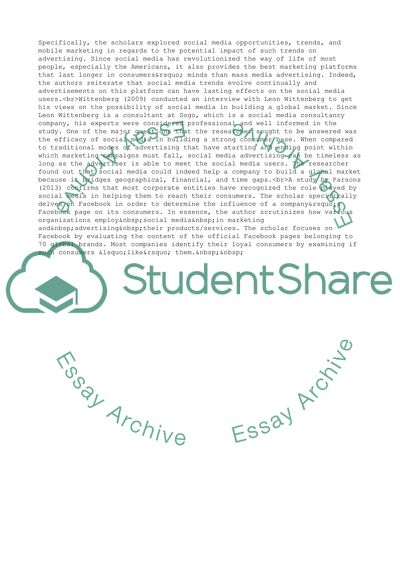Cite this document
(Social Media Advertising Research Proposal Example | Topics and Well Written Essays - 2250 words, n.d.)
Social Media Advertising Research Proposal Example | Topics and Well Written Essays - 2250 words. Retrieved from https://studentshare.org/business/1857578-please-choose-a-topic-related-to-business-and-management
Social Media Advertising Research Proposal Example | Topics and Well Written Essays - 2250 words. Retrieved from https://studentshare.org/business/1857578-please-choose-a-topic-related-to-business-and-management
(Social Media Advertising Research Proposal Example | Topics and Well Written Essays - 2250 Words)
Social Media Advertising Research Proposal Example | Topics and Well Written Essays - 2250 Words. https://studentshare.org/business/1857578-please-choose-a-topic-related-to-business-and-management.
Social Media Advertising Research Proposal Example | Topics and Well Written Essays - 2250 Words. https://studentshare.org/business/1857578-please-choose-a-topic-related-to-business-and-management.
“Social Media Advertising Research Proposal Example | Topics and Well Written Essays - 2250 Words”, n.d. https://studentshare.org/business/1857578-please-choose-a-topic-related-to-business-and-management.


